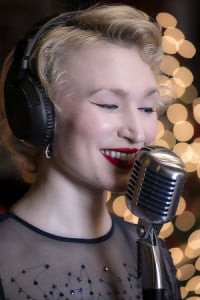Narration of Van Gogh Art Exhibit, Documentary, Historical, Audiobook
Description
Read MoreVocal Characteristics
Language
EnglishVoice Age
Young Adult (18-35)Accents
North American (General)Transcript
Note: Transcripts are generated using speech recognition software and may contain errors.
Vincent Van Gogh was 33 years old when he moved to Paris in 18 86 seeking to improve his skills as an artist and discover the latest painting trends. His encounters with artists and art dealers led him northwest of the city to the suburbs along the River Seine. In late spring, 18 87 in the increasingly industrialized region outside Paris, he experimented with expressive dots and dashes of paint in a brighter, more diverse color palette. He later reflected on how his trips to the suburbs had transformed his work. And when I painted the landscape in a this summer, I saw more color in it than before by exploring the artistic potential of these suburbs. Van Gogh was following in the footsteps of artist Georges Paul S Emil Bernard and Charles, a grand who began to paint in the area. Earlier in the 18 eighties, like Van Gogh, these ambitious young artists sought new techniques and subjects that would push the medium farther than their contemporaries had. While the impressionist like Claude Monet and Pierre August Renoir traveled to more distant suburbs to work in the idyllic countryside, Van Gogh Sara and their fellows remained closer to the city, taking inspiration from the markers of modernity, bridges, factories and railways in the industrialized suburbs which fueled their experiments with color and paint application. Located across the seine from Paris A was easily accessible from the city by train or on foot. The double bridges connecting the suburb to the city became icons of the landscape. The A railroad bridge made of sheet metal and stone and the a wooden pedestrian crossing set on stone piers with toll houses on each end dubbed the Holy city of Voting. A also offered a number of other recreational activities that appealed to both residents and day trippers from Paris George Sora who first ventured to the Parisian suburbs in 18 81 highlighted these activities in more than 20 preparatory studies for his monumental bathers at a cafes and restaurants along the such as the and the both of which Van Gogh painted were popular destinations for good food and lively conversation situated across the river from the suburb of Cliche was more industrial since the early 19th century. Its swaths of undeveloped land and cheap rent had made it an attractive area for businesses looking to construct factories. By the 18 eighties, manufacturers of candles, glass and soap among other products populated the suburb was also home to a large gas facility which converted coal into natural gas to provide light and heat for the citizens of Paris Paul s whose family moved to a in 18 80 when he was 16 years old, painted at cliche between 18 85 and 18 87. There, he found a new kind of landscape dominated by the gas plants, seven circular tanks back across the to the south of the third stop on the train line from the Saint Lazar in Paris. Although the area included some light industry such as a distillery and perfumeries. Corvo was distinguished from the other suburbs by its beautiful 17th and 18th century churches, homes and gardens. When Emil Bernard was 16, his family moved from Paris into a house located between a and his artistic pursuits, however, led him away from these scenic neighborhoods. He instead worked along the bank of the sun depicting diners at outdoor tables at restaurants, couples strolling near the river and Spectators enjoying the frequent boat races. Around 18 87 Renard was photographed in the same location where he drew his inspiration seated across from Van Gogh, seen from behind in a hat. The last destination of significance to these artists. The Island of La Grand in the near sparked several of the artists creativity most famously, Sara connected to both banks of the river by the and the the island's location made it a prime spot for boating, fishing and swimming along the banks of the island. Cafes catered to the boating crowd and large halls hosted balls and concerts. The island's public parks provided a quieter setting for Charles on ground's tranquil views of the sun aground, moved to Paris from northern France in 18 82. But he only began working along the river. In 18 85 he befriended Sara and the two artists painted together on the island in 18 88 on Grand road of their excursions in light of the fine weather. I could not resist a trip to the Grand. I'm in the company of Sara who also makes the journey on a daily basis. These artists interest in the suburbs northwest of Paris was brief, lasting only from 18 82 until 18 90. They moved in different creative directions after their time in this area. But their encounters with industry, leisure and each other along the had a lasting effect on their work. Their experiments with color and brush work in turn influenced future generations of artists by leaving the city in search of new sources of inspiration in the suburbs. These artists charted a new course for modern art.
